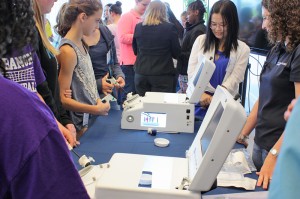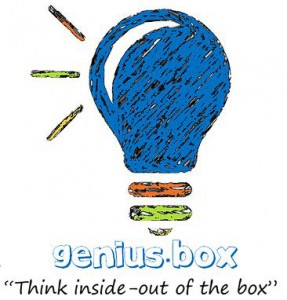Seven CT Businesses Among 500 Fastest Growing Tech Companies in US
/Where in Connecticut are the fastest growing technology companies? New Haven, Branford, Trumbull, Madison, Norwalk, and Farmington. Seven Connecticut companies earned a ranking rank on the recently released 2016 Technology Fast 500 rankings of the fastest-growing tech companies in North America, compiled by professional-services firm Deloitte. That’s the same number of Connecticut firms on last year’s list.
Four of the state’s representatives produce software, aligning with the dominance of that sector, with some 58 percent of this year’s Fast 500 companies in software. Two of the Connecticut companies work in biotechnology, which comprised the second-most represented segment on the list, covering 13 percent of firms.
New Haven-based Achillion Pharmaceuticals ranked highest among Connecticut companies, at No. 43, posting 2,436 percent growth. It was ranked #12 among biotechnology/Pharmaceutical companies. Achillion Pharmaceuticals, Inc. is a "science-driven, patient-focused company leveraging its strengths across the continuum from drug discovery to commercialization to provide better treatments for people with serious diseases," according to the company website. 
Following at No. 239, Farmington-based Evariant Software recorded a 303 percent increase. Next came HPOne, a Trumbull health-insurance solutions firm, which recorded 199 percent growth. Madison's Clarity Software Solutions was No. 385, Norwalk-based software company etouches ranked No. 461, with 132 percent growth. Rounding out the Connecticut tech firms earning a slot among the top 500 were Branford-based Core Infomatics at No. 469 and Alexion Pharmaceuticals, now headquartered in New Haven, at No. 473.
New York City and California firms accounted for nine of the top 10 companies on the list. By region, the San Franciso Bay area had 20 percent of the companies, New York 17 percent, Los Angeles 8 percent, Washington 6 percent and New England 5 percent.
Los Angeles-based Loot Crate, which delivers entertainment and pop culture-themed collectibles, ranked No. 1 overall, with 66,661 percent growt h between 2012 and 2015. Founded in 2012, Loot Crate has more than 650,000 subscribers worldwide in 35 countries. The ranking summary points out that "Loot Crate’s position at the top of this year’s list showcases how innovation isn’t always about new technology and invention, but also about ingenuity, the recombining of existing assets, and know-how in new ways to maximize value."
h between 2012 and 2015. Founded in 2012, Loot Crate has more than 650,000 subscribers worldwide in 35 countries. The ranking summary points out that "Loot Crate’s position at the top of this year’s list showcases how innovation isn’t always about new technology and invention, but also about ingenuity, the recombining of existing assets, and know-how in new ways to maximize value."
Yieldbot, a New York City-based company focused on media, ranked No. 2.
"Amid a fierce business climate, there seems to be no shortage of new and established companies that are unlocking a seemingly unlimited potential for growth and advancement through technology’s continued disruption and proliferation across industries," said Sandra Shirai, principal, Deloitte Consulting LLP and US Technology, Media, & Telecommunications leader.
 The focus of the Connecticut firms that made this year’s list reflected the overall composition of the rankings, which were based on companies’ revenue growth between 2012 and 2015. Software continues to have the greatest impact across technology sectors, representing 58 percent of the entire list and five of the top 10 winners overall.
The focus of the Connecticut firms that made this year’s list reflected the overall composition of the rankings, which were based on companies’ revenue growth between 2012 and 2015. Software continues to have the greatest impact across technology sectors, representing 58 percent of the entire list and five of the top 10 winners overall.
"Combining technological innovation, entrepreneurship, and rapid growth, Fast 500 companies—large, small, public, and private—hail from cities far and wide across North America and are disrupting the technology industry," the introduction to the rankings emphasized.



 As the state's principal educational technology advisor, the website explains, “the Commission works to ensure the effective and equitable use of resources, without duplication, and engender cooperation and collaboration in creating and maintaining technology-based tools for use by all the people of Connecticut.”
As the state's principal educational technology advisor, the website explains, “the Commission works to ensure the effective and equitable use of resources, without duplication, and engender cooperation and collaboration in creating and maintaining technology-based tools for use by all the people of Connecticut.” Medical technology creates more than two million jobs directly and indirectly across the United States. The industry is one of the few U.S. manufacturing sectors that is a net exporter, and its innovations help reduce the human and economic burden of chronic disease. Industry officials point out that while U.S. leads the world in the development of new medical technology, the device tax “threatens that leadership.”
Medical technology creates more than two million jobs directly and indirectly across the United States. The industry is one of the few U.S. manufacturing sectors that is a net exporter, and its innovations help reduce the human and economic burden of chronic disease. Industry officials point out that while U.S. leads the world in the development of new medical technology, the device tax “threatens that leadership.”


 “We were excited here in Connecticut to give our Girl Scouts the opportunity to participate in a pilot of Digital Cookie, a first-of-its-kind web platform that lets girls sell cookies from their own protected, personalized websites,” said Tiffany Ventura Thiele, Communications & PR Manager for Girl Scouts of Connecticut.
“We were excited here in Connecticut to give our Girl Scouts the opportunity to participate in a pilot of Digital Cookie, a first-of-its-kind web platform that lets girls sell cookies from their own protected, personalized websites,” said Tiffany Ventura Thiele, Communications & PR Manager for Girl Scouts of Connecticut.
 Officials stress that “because 100 percent of the net revenue raised through the Girl Scout Cookie Program stays with local councils, when you purchase Girl Scout Cookies you’re not only getting a delicious treat — you’re also making an important investment in your community.”
Officials stress that “because 100 percent of the net revenue raised through the Girl Scout Cookie Program stays with local councils, when you purchase Girl Scout Cookies you’re not only getting a delicious treat — you’re also making an important investment in your community.” That aspect will be front and center on Saturday, June 7, when the Connecticut Technology Council sponsors the annual Girls of Innovation program in Hartford, geared specifically to middle school age girls, entering grades 7 and 8, “to experience science and its challenges in a fun, interactive way,” according to program organizers.
That aspect will be front and center on Saturday, June 7, when the Connecticut Technology Council sponsors the annual Girls of Innovation program in Hartford, geared specifically to middle school age girls, entering grades 7 and 8, “to experience science and its challenges in a fun, interactive way,” according to program organizers.
































